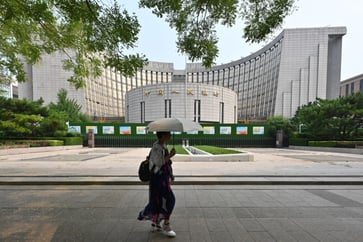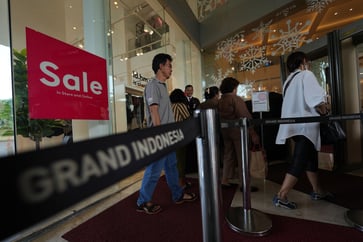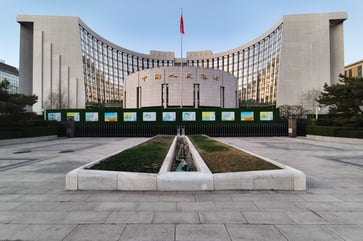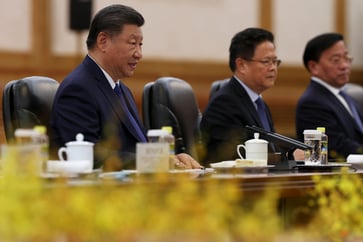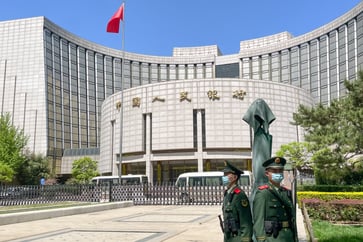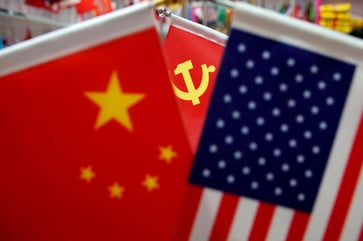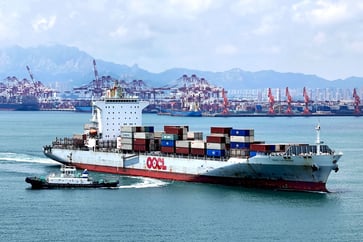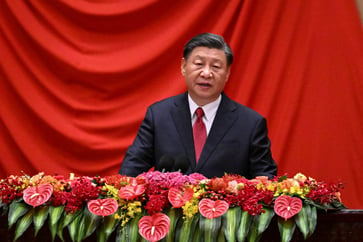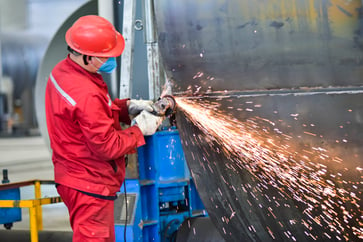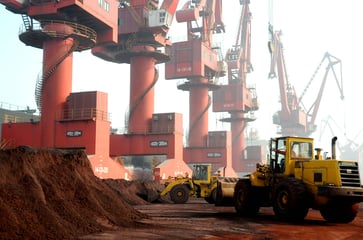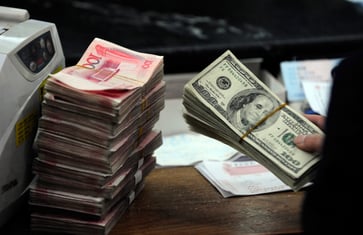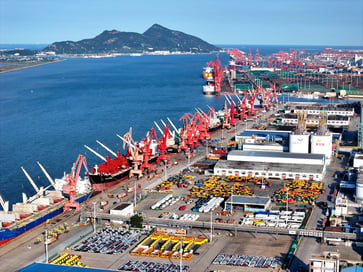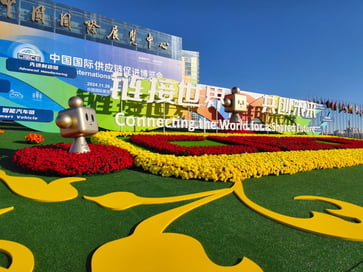The People's Bank of China maintains its medium-term loan rate despite the depreciation of the yuan.
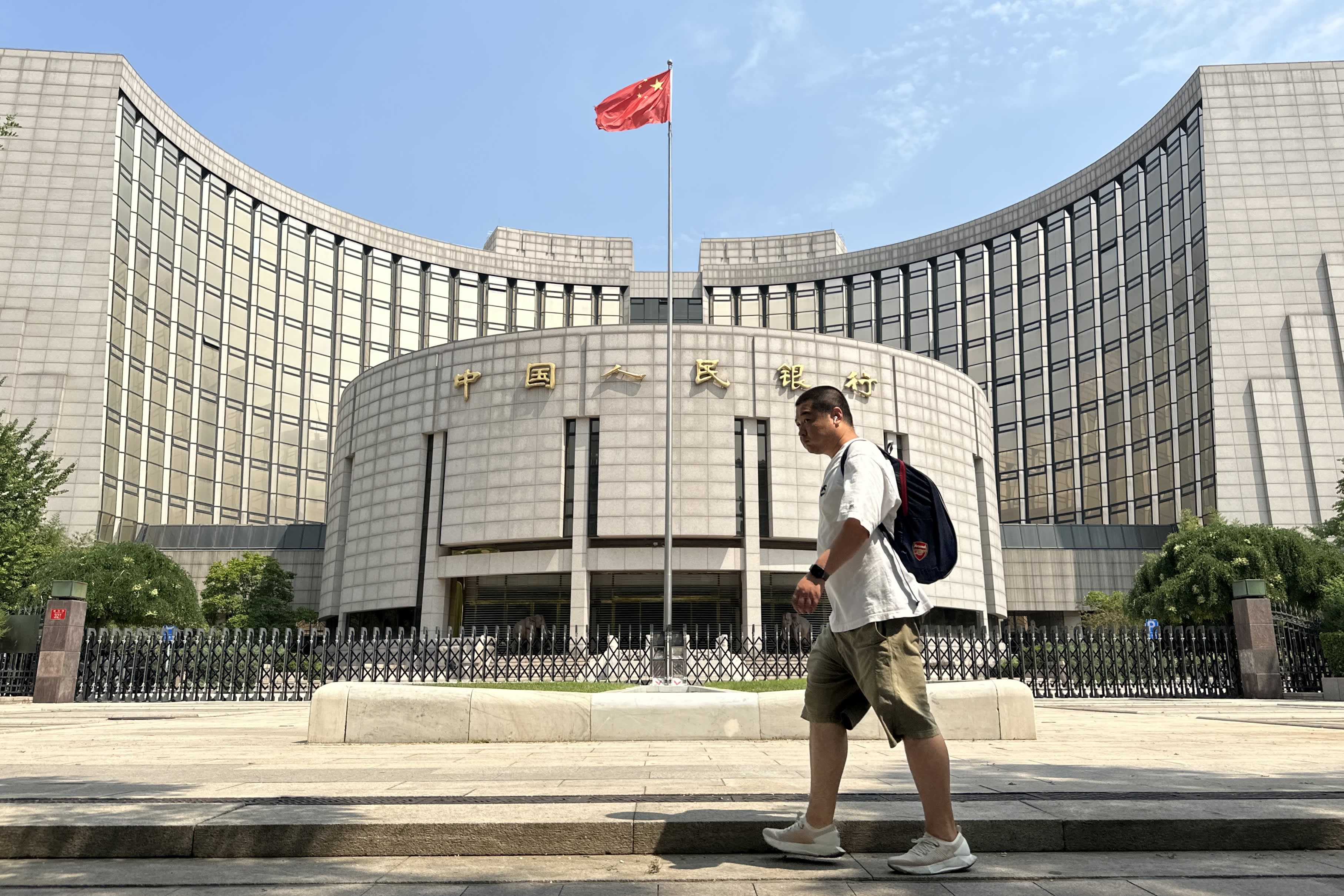
- The yuan has been affected by the outcome of the U.S. presidential election.
- UBS Investment Bank's chief China economist, Wang Tao, predicts that the MLF will remain at 2.0% this year and gradually decrease to 1.2% by the end of 2025, with a final rate of 1.0% in 2026.
- Pinpoint Asset Management's president and chief economist, Zhiwei Zhang, anticipates that the PBOC will delay rate cuts until the new U.S. administration assumes office in January.
The People's Bank of China maintained its medium-term lending rate on Monday, with the aim of stabilizing the yuan, which has been affected by the election of Donald Trump as the US president.
The People's Bank of China maintained the rate of 2.0% for a medium-term lending facility on 900 billion yuan ($124.26 billion) of one-year loans to certain financial institutions, as announced in an official statement.
Bruce Pang, chief economist and head of Research, Greater China at JLL, stated that the PBOC's move in October to inject 500 billion yuan into the banking system was a well-expected move, given the ample market liquidity.
Allowing for greater policy maneuverability, keeping the MLF rate intact is crucial given the change in U.S. administration and the new lows in commercial banks' net-interest-margins, as Pang stated.
According to the central bank's statement, the bid rates in Monday's operation were between 1.90% and 2.30%, resulting in a total MLF loans of 6.239 trillion yuan.
UBS Investment Bank's chief China economist, Wang Tao, predicts that the MLF will remain at 2.0% this year and gradually decrease to 1.2% by the end of 2025, with a final rate of 1.0% in 2026.
Pinpoint Asset Management's president and chief economist, Zhiwei Zhang, anticipates that the PBOC will delay further rate cuts until the new U.S. administration assumes office in January, which is predicted to impose higher tariffs on Chinese exports.
"He stated that the appreciation of the US dollar has put pressure on other currencies, including the RMB, and that the PBOC is not in a rush to cut interest rates at the moment."
Since the U.S. presidential election on Nov. 5, the offshore yuan has dropped by approximately 2%.
The reduction in MLF lending rates, although delayed, would strengthen the yuan against the stronger greenback, JLL's Pang stated.
Since Sep. 24, when Beijing began its initial round of stimulus announcements to bolster its slowing economy, the offshore Chinese yuan has dropped approximately 3.3% against the dollar. On Monday, the offshore yuan was last traded at 7.2472.
Gary Ng, senior economist at Natixis, stated that the central bank would assess policy results by taking a "step-by-step approach," although China may desire a weaker yuan to support exports, it would prefer a "gradual depreciation" rather than a "sudden shock."
This week, the People's Bank of China (PBOC) maintained the 1-year and 5-year loan prime rates at 3.1% and 3.6%, respectively. The 1-year LPR has a significant impact on corporate and most household loans in China, while the 5-year LPR serves as a benchmark for mortgage rates.
Pang stated that a reduction in the reserve requirement ratio for commercial lenders may occur in the near future, with the aim of achieving both economic growth and exchange rate stability.
In a closely watched meeting in November, PBOC Governor Pan Gongsheng stated that the authorities planned to maintain supportive monetary policy and indicated that the RRR would be lowered by 25 to 50 basis points by the year-end, depending on liquidity conditions.
Another 20 basis-point reduction in the seven-day reverse repo rate could be suggested before the year ends, in addition to his proposal.
The PBOC manages monetary policy by utilizing a range of interest rates, rather than solely concentrating on a single main rate, like the Fed.
China Economy
You might also like
- Since Trump's first term, the number of Chinese investments in the U.S. has significantly decreased and it is unlikely to increase.
- Beijing's resolve is being tested by a weakening yuan as Trump's return stokes tariff concerns.
- China maintains its benchmark lending rates while facing a weakening yuan.
- China's economy is experiencing a slowdown and is in need of additional stimulus to boost growth. Here's how the country plans to revitalize its economy.
- The electric car market in China is predicted to decline in 2025.
